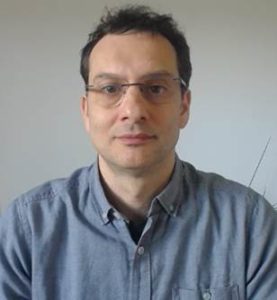Field effect transistor biosensors: Optimisation of the influence of size and geometry and fabrication methods
César Pascual García Nano-Enabled Medicine Group, Luxembourg Institute of Science and Technology 5, Avenue des Hauts-Fourneaux, L-4362 Esch-Sur-Alzette, Luxembourg
Molecular biosensors are devices designed to detect minimum amounts of biomarkers primarily nucleotides for genetics or proteins and peptides in proteomics. Enhancing the limits of detection of low concentrations of these molecules requires to combine efficiently mechanisms to capture molecules and their transduction. Micro and nanofabrication techniques based on semiconductor technologies have burst our abilities of miniaturization that improve both mass transport mechanisms of molecules towards the sensor and the transduction capabilities. However, it is worth to make some considerations based on the current limitations of signal-to-noise ratio and effective functionalization in order to hit the reliability requirements that biomedical applications require.
In this seminar we will review the concepts of biosensing, which are affected by the geometry and the size of biosensors. I will do this exercise from the point of view of a physicist that had to do the transition from the study of fundamental phenomena in semiconductors to understand the complexities of bio-molecules and the not less challenging system at the interface. I will apply these concepts to practical implementations for field effect transistors, a very promising class of sensors due to the sophistication that semiconductor technology is able to deliver with the integration with conductive metal oxide semiconductor circuits. We will see how these devices can be fabricated and deliver sub 100 nm lateral resolutions even with techniques based in flexible optical lithography for advanced prototyping.
 César Pascual García has a background in solid-state physics, with extensive experience in instrumentation and nano-biosciences. After his masters in Universidad Autónoma de Madrid (UAM) he did his PhD in the Scuola Normale Superiore studying fundamental properties of electrons. He has a broad profile having been involved in fundamental and applied research in fields ranging from lasers, superconductivity and biosafety. With the award of the FNR-ATTRACT fellowship he embarked in a new activity in LIST in the field of biosensing. Since then he works in systems that combine molecular detection with in-situ functionalisation to address the enormous combinatorial challenge that the new trends in genomics and proteomics are demanding. He currently coordinates ELECTROMED.eu, a project financed by the European Innovation Council to develop an instrument to screen peptides for personalised cancer vaccines.
César Pascual García has a background in solid-state physics, with extensive experience in instrumentation and nano-biosciences. After his masters in Universidad Autónoma de Madrid (UAM) he did his PhD in the Scuola Normale Superiore studying fundamental properties of electrons. He has a broad profile having been involved in fundamental and applied research in fields ranging from lasers, superconductivity and biosafety. With the award of the FNR-ATTRACT fellowship he embarked in a new activity in LIST in the field of biosensing. Since then he works in systems that combine molecular detection with in-situ functionalisation to address the enormous combinatorial challenge that the new trends in genomics and proteomics are demanding. He currently coordinates ELECTROMED.eu, a project financed by the European Innovation Council to develop an instrument to screen peptides for personalised cancer vaccines.
